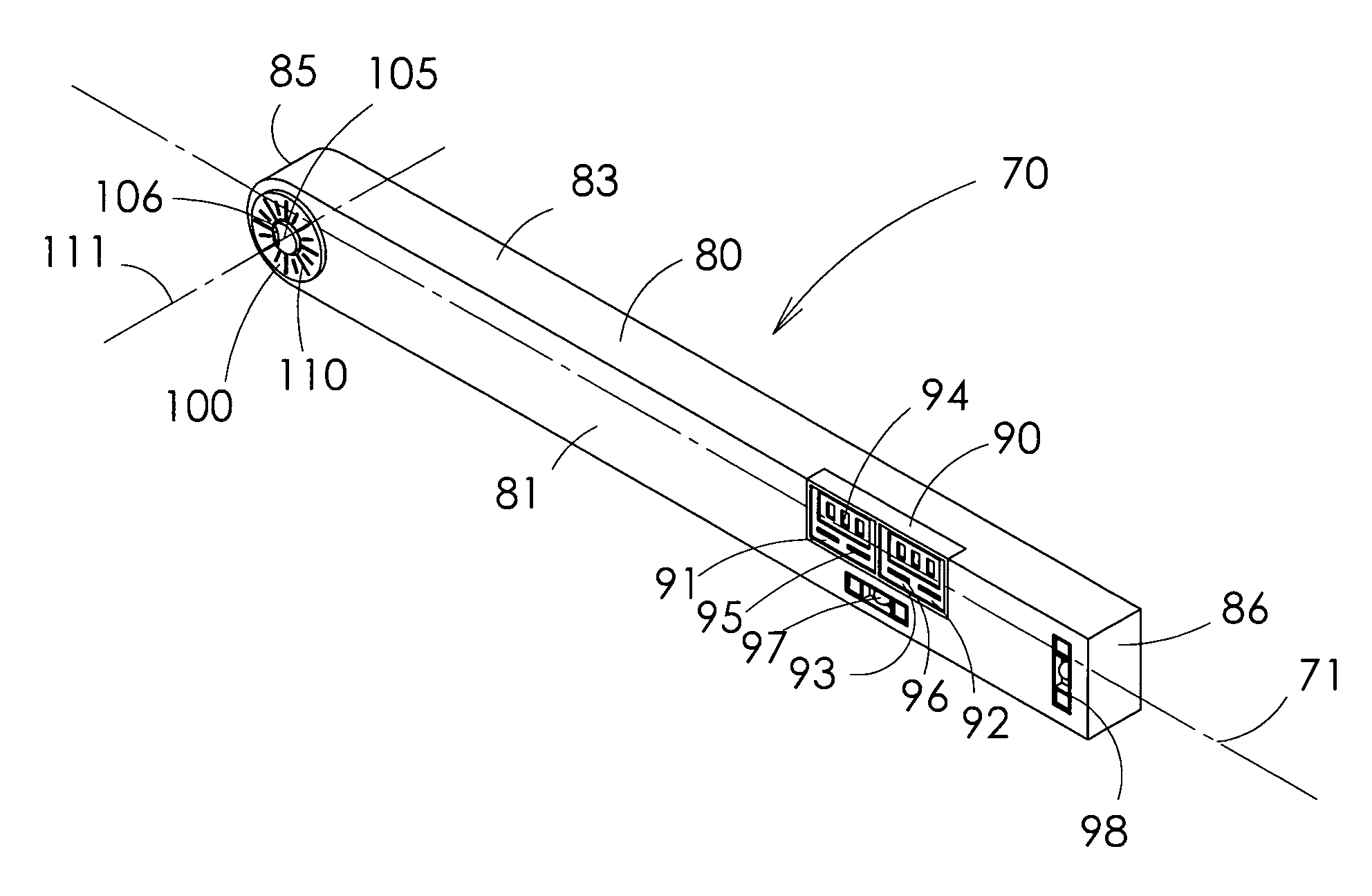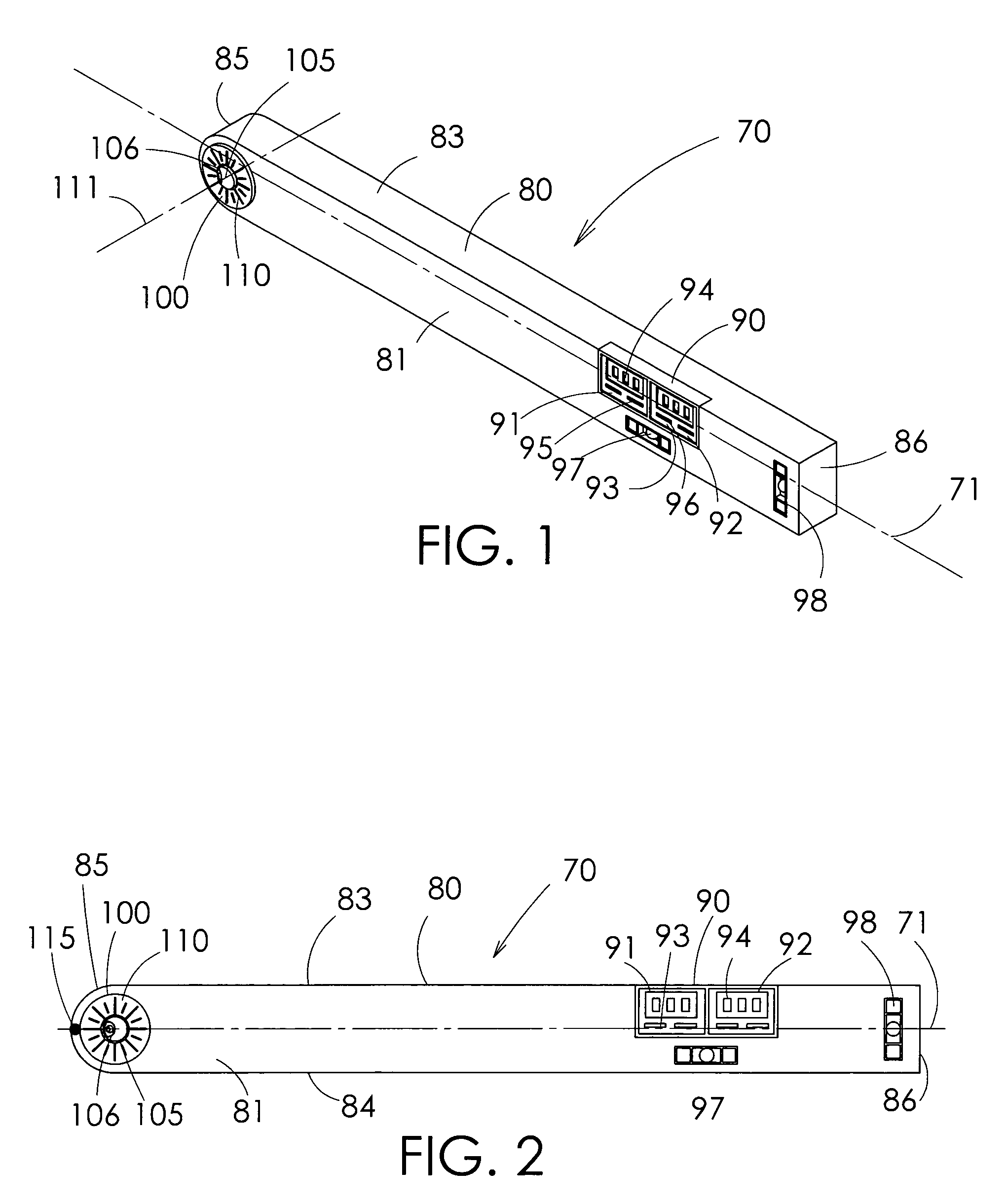Laser tool
a laser tool and tool head technology, applied in the field of laser tools, can solve the problems of inefficiency, unintended problems, time-consuming and wasteful, and the angle of cutting drywall is too small, and achieve the effect of avoiding the risk of damage to an arm and tight spaces
- Summary
- Abstract
- Description
- Claims
- Application Information
AI Technical Summary
Benefits of technology
Problems solved by technology
Method used
Image
Examples
Embodiment Construction
[0036]While the invention will be described in connection with a preferred embodiment, it will be understood that it is not intended to limit the invention to that embodiment. On the contrary, it is intended to cover all alternatives, modifications and equivalents as may be included within the spirit and scope of the invention as defined by the appended claims.
[0037]Turning to FIGS. 1–4, a laser tool 70 is provided. The laser tool 70 has a longitudinal axis 71. The laser tool 70 has a body 80. The body 80 has a front side or surface 81 and an opposed rear side or surface 82. A top side 83 and bottom side 84 are also provided. The body has a first end 85 and a second end 86. The front and rear surfaces 81 and 82 are preferably generally rectangularly shaped, and preferably define respective surface areas that are preferably approximately 2 feet long by 2.5 inches tall. The first end 85 of the front surface is preferably rounded. The front surface 81, rear surface 82, top side 83, bot...
PUM
 Login to View More
Login to View More Abstract
Description
Claims
Application Information
 Login to View More
Login to View More - R&D
- Intellectual Property
- Life Sciences
- Materials
- Tech Scout
- Unparalleled Data Quality
- Higher Quality Content
- 60% Fewer Hallucinations
Browse by: Latest US Patents, China's latest patents, Technical Efficacy Thesaurus, Application Domain, Technology Topic, Popular Technical Reports.
© 2025 PatSnap. All rights reserved.Legal|Privacy policy|Modern Slavery Act Transparency Statement|Sitemap|About US| Contact US: help@patsnap.com



